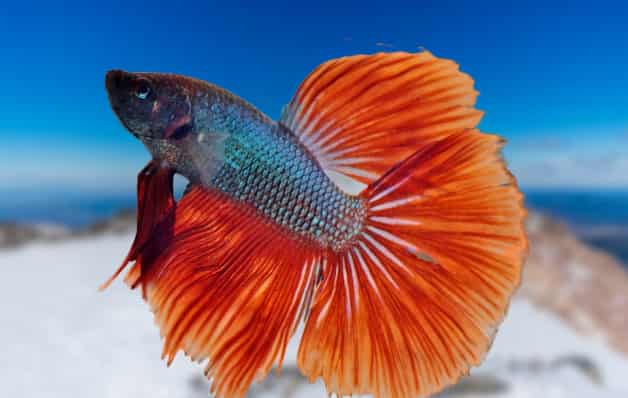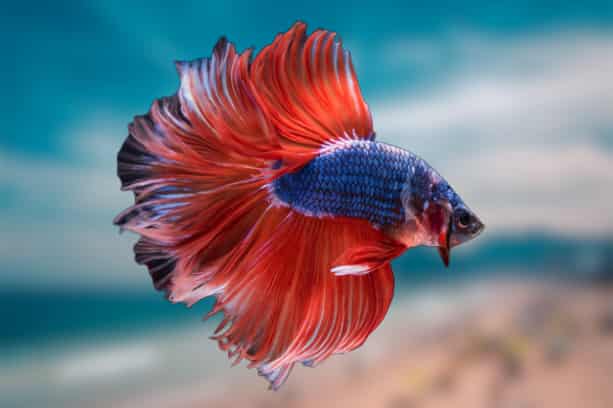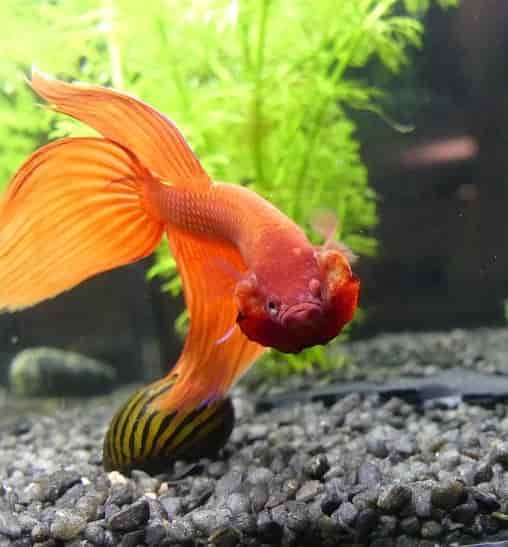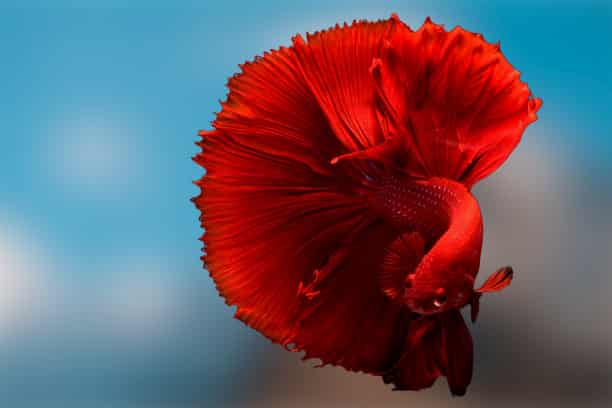How take care of betta fish
Taking care of a fish is not an easy job, especially when it comes to
Betta fish tank
- Purchase
an appropriate aquarium.
Despite the fact that - Choose
the right location for your fish tank. Choosing a good location for your
the - Do
not place the aquarium too close to a window because it can get too hot
from the sunlight coming in or too cold if there is a draft.
- Keep
the tank away from radiators or other sources of heat. Again, the tank
should not get too warm.
- Pick
a steady, level surface that won't get hit when individuals or different pets stroll by. Placing the table or desk against a wall will add more stability and prevent too much jostling.
- Pick
a location where you can sit comfortably and look at your fish. Putting
your betta fish in an out-of-the-way area won’t allow you to enjoy him.
- Set
up the habitat to be comfortable for your betta fish. Your fish will want to hide sometimes, so a cave or a plastic plant can provide him with a place to have some alone time. Aquarium rocks or glass marbles will help anchor the accessories in place and will also add some sparkle or color to your fish’s environment. Don’t give your betta fish a roommate, because he won’t be friendly and could end up hurting or killing another fish.
· Maybe you're interested in the beauty of the Betta
How often do you feed betta f ish
- Don’t
overfeed your fish. The amount of food that your betta fish can eat in one day is about the size of her eyeball. So look at your pet’s eye and give her a pinch of food that is smaller than that. Even if she eats
it all in
a couple of - Feed
your fish every day. You’ll want to feed her daily, but if you skip a day here and there, that’s okay. If you go on vacation for a week, you will
certainly - Vary
your pet’s diet. Betta fish should not eat the same food every day. At least weekly, give her something different feed from her normal diet. You
can also choose two or three different foods and alternate them each day.
Here are some ideas that can
be found - Dried
or frozen bloodworms.
- Brine
shrimp.
- Fruit
flies without wings or fruit fly larvae.
- Small
bits of frozen beef heart (this should be a rare treat).
- Avoid
feeding your betta fish only pellets or dried flakes. While these are okay sometimes,
they’re not a healthy diet for every single day. If you
do - How
to Safely Move - Only
pick up your fish when
absolutely necessary be moving for some reason - Prepare
an appropriate temporary container. If you
are going to some - Use
a net or cup to scoop up the fish. Buy a fish net to catch your aquatic friend. You can also try a plastic cup. Move quickly but
gently to scoop him up and be careful not to pinch any part of him between
the net or cup and the side of the tank.
- If
your pet gets scared, try again later. If your fish
starts darting
· Maybe you're interested in how I can play with my Betta Fish?- Don’t
overfeed your fish. The amount of food that your betta fish can eat in one day is about the size of her eyeball. So look at your pet’s eye and give her a pinch of food that is smaller than that. Even if she eats
it all in
How to
clean betta
·
Prepare the replacement water. The day before you will
·
·
·
·
·
·
·
·
be
careful as described
·
some
·
·
very small be
sucked to
gently stir or
so
·
·
·
ensure
Betta fish tank setup
As a betta fish owner, you
will need certain equipment to keep your betta healthy and happy. First, you
need the right size tank for the number of fish, lighting, filtration , a
thermometer, gravel, food, plants, and a heater. Although these are all very important
items, there are others that are often overlooked and have equal importance.
The Scraper
Algae will build up in your fish tank. The scraper is the perfect tool to remove it from
your aquarium. The best scraper you can buy is one that has two sides to it.
One side is a sponge that will help get rid of the loose algae residing
Do I need a net?
A net comes in handy when
cleaning out your fish tank. You have a large selection of choices, depending
on the size your betta fish needs. If you have fry or little fish to scoop up,
a smaller net will suffice. The webbing in the smaller nets is much softer,
which is better for the smaller fish. Chances are you have some debris and
uneaten food floating around in your aquarium. You can also use the net to
remove some of this debris. If you are planning on removing your betta fish
from your tank, use all different size nets to do this. There are so
many things fishnets can be used
Siphon
One of the most forgettable,
yet vitally important pieces of equipment is a plastic hose called a siphon.
Debris will accumulate in your aquarium and create an environment unhealthy for your betta fish. For regular maintenance, it is recommended hose in an empty
bucket, and the other side in your fish tank. If you have a manual siphon, suck on one end of the hose to get the water rolling. If you have an
electric siphon, you will not need to use manual suction.
There are different hose
sizes for various uses. For example, if you need to clean the gravel bed, you
would use a wider, longer type of hose. That design and shape is most suitable
for finer debris and needs to be sifted
Now that you have the right
betta fish tank supplies, let's talk about the plants you can add to
your tank!
Betta fish are part of a
rare group of fish that have a labyrinth organ. What this
organ does is allow bettas to breathe in not only water but also atmospheric
air. In their original habitat, the labyrinth organ allowed bettas the ability
to swim in shallow waters as well as
The Fish Tank
It's time to introduce your
new betta fish to your aquarium! When doing this, try to create an environment
that will look and feel like his natural habitat. Not only will it make your
tank look beautiful, but it will also keep your fish healthy and happy. You can
do this by adding ornaments and plants to the tank that resemble his native
home.
Which plants should I
choose?
When creating a look and
feel that resembles the betta's habitat, you can choose either real plants
(which will help the oxygen flow in the water) or ornamental plastic plants.
Some people like to use both. Your choice will depend on which serves your betta
fish best and which a plant doesn't interfere with his natural movements.
Here is more information about plant types:
Plastic - plastic plants
have a lot of benefits. They don't produce oxygen like live plants, but at the
same time when it comes to
Natural - one of the most
common decorations used in betta fish aquariums is a natural water plant. There
are a lot of different choices from which to choose, with certain plants being
a better choice for certain species. If you decide natural plants are right for
you and your finned friend, be sure to purchase them from a reputable dealer.
They will know the best plant for your betta fish.
If you look at the roots of
live aquatic plants, you will notice they grow downward in the water. You
should check these plants regularly. Sometimes they can look
brown and soggy, which means it's time to remove them. Also, if you notice they
hinder your betta's movement because of their size, remove those.
Many betta enthusiasts
believe the Chinese evergreen is the best plant for betta fish. Other
recommendations are peace water lilies and philodendrons. Peace water lilies
sit gracefully at the top of the aquarium, while philodendrons are usually
found This plant is often found
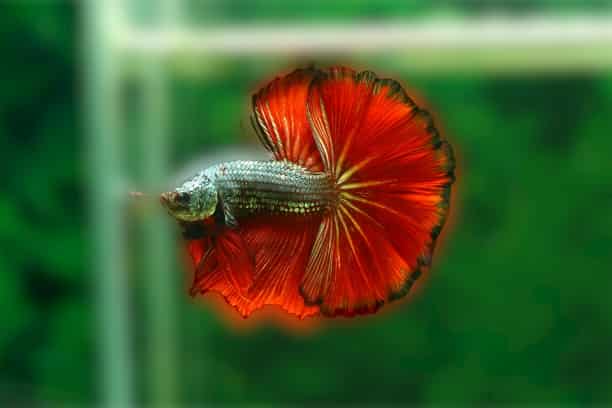 |
| Betta Fish |
Betta fish health
- Check
your betta fish’s color. As your fish gets older or if he gets sick, his shading may blur. If you notice the color fading and you have only had him a short time, it’s possible that he might be ill.
Evaluate fish’s water - Look
for bumps, torn fins, and other physical changes. Your fish shouldn’t have lumps or bumps on his body. Also, his fins and tail should remain roughly the same. If it looks like pieces of his tail or fins are coming off or tearing, that is a sign that he’s not healthy. Different indications of weakness include a white film or white specks on the fish, hued marks that were not there previously, and a swollen body. Test the water to see if
the wrong pH or high ammonia levels are causing the problem.
- Take
your fish to the vet if
you are worried be able to in many cases
- Check
your betta fish’s color. As your fish gets older or if he gets sick, his shading may blur. If you notice the color fading and you have only had him a short time, it’s possible that he might be ill.
Betta fish water change
Water added to
the tank must be free of chlorine and other impurities. Water added to the
tank must be free of chlorine and other impurities. When using tap
water, use Betta water treatment to remove chlorine, chloramine, ammonia
and other heavy metals. This prevents possible . which
means that
Your betta fish will probably live two to three years or longer; there
For more exotic pets update


